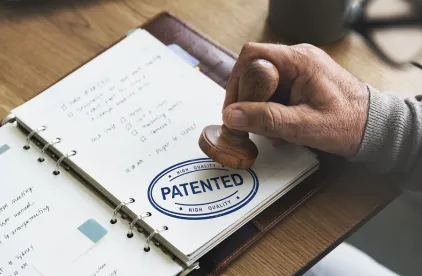Our first article on Vanda Pharmaceuticals, Inc. v. Aventisub, LLC focused on the Federal Circuit’s decision upholding the subject matter eligibility of the personalized method of treatment claims under 35 USC § 101. Here, we consider how the Fanapt label was sufficient to establish infringement of personalized treatment claims in the ANDA context.
The Personalized Method Of Treatment Claims
The patent at issue, U.S. Patent 8,586,610, is owned by Aventisub LLC, exclusively licensed to Vanda, and listed in the Orange Book for Fanapt® (iloperidone). Claim 1 was deemed representative:
1. A method for treating a patient with iloperidone, wherein the patient is suffering from schizophrenia, the method comprising the steps of:
determining whether the patient is a CYP2D6 poor metabolizer by:
obtaining or having obtained a biological sample from the patient; and performing or having performed a genotyping assay on the biological sample to determine if the patient has a CYP2D6 poor metabolizer genotype; and if the patient has a CYP2D6 poor metabolizer genotype, then internally administering iloperidone to the patient in an amount of 12 mg/day or less, and if the patient does not have a CYP2D6 poor metabolizer genotype, then internally administering iloperidone to the patient in an amount that is greater than 12 mg/day, up to 24 mg/day,wherein a risk of QTc prolongation for a patient having a CYP2D6 poor metabolizer genotype is lower following the internal administration of 12 mg/day or less than it would be if the iloperidone were administered in an amount of greater than 12 mg/day, up to 24 mg/day.
Infringement In The ANDA Context
This dispute arose in the ANDA context, after West-Ward sought FDA approval to market a generic version of Vanda’s Fanapt® (iloperidone) product. Thus, Vanda’s theory of infringement was based on an assertion that West-Ward’s proposed product label (which would correspond to Vanapt’s Fanapt® label) would induce infringement.
On this point, the Federal Circuit expressly considered and rejected West-Ward’s argument that other evidence of direct infringement was required:
We agree with Vanda that a patentee does not need to prove an actual past instance of direct infringement by a physician to establish infringement under 35 U.S.C. § 271(e)(2)(A). As we have explained, “section 271(e)(2)(A) makes it possible for a patent owner to have the court determine whether, if a particular drug were put on the market, it would infringe the relevant patent.” Bristol Myers Squibb, 69 F.3d at 1135 (emphases in original).
Thus, the product labeling was the focus of the infringement analysis.
Product Labeling Induces Infringement Of Personalized Treatment Claims
The district court found that West–Ward’s proposed product label “recommends” that physicians perform the steps of the method claimed in the ‘801 patent. The majority of the Federal Circuit panel (Judge Lourie and Judge Hughes) agreed.
(In her dissenting opinion, Chief Judge Prost states that she would not have reached the issue of infringement based on her views that the claims did not satisfy the patent eligibility requirements of § 101.)
Section 2 of the proposed label included the following instructions:
The recommended starting dose for iloperidone tablets is 1 mg twice daily. Dose increases to reach the target range of 6 to 12 mg twice daily (12 to 24 mg/day) may be made with daily dosage adjustments not to exceed 2 mg twice daily (4 mg/day). The maximum recommended dose is 12 mg twice daily (24 mg/day).
Section 2.2, entitled “Dosage in Special Populations,” stated:
Dosage adjustment for patients taking iloperidone who are poor metabolizers of CYP2D6: Iloperidone dose should be reduced by one-half for poor metabolizers of CYP2D6 [see Pharmacokinetics (12.3)].
Section 12.3 discusses the prevalence of poor metabolizers and stated:
[Poor metabolizers (PMs)] of CYP2D6 have higher exposure to iloperidone compared with [extensive metabolizers] and PMs should have their dose reduced by one-half. Laboratory tests are available to identify CYP2D6 PMs.
Based on this information, the Federal Circuit found that “the district court did not clearly err in finding that § 12.3 ‘recommends that practitioners perform or have performed a genotyping assay to determine whether patients are CYP2D6 poor metabolizers.'”
With regard to the recited genotyping steps, the court cited testimony by experts for both parties that the “laboratory tests” referenced in the label are “genotyping” tests, and testimony by Vanda’s witnesses that genotyping tests would require “obtaining a biological sample” as recited in the claims.
With regard to the recited dosing steps, West-Ward argued that there was no infringement because the label permits doses for non-poor responders as low as 12 mg/day rather than the “greater than 12 mg/day” recited in the claims. The Federal Circuit disagreed that this difference was sufficient to “compel a finding of non-infringement.” The court reasoned (internal quotations omitted):
Even if not every practitioner will prescribe an infringing dose, that the target dose range instructs users to perform the patented method is sufficient to provide evidence of West-Ward’s affirmative intent to induce infringement.
The Federal Circuit also explained that because West-Ward’s label “recommends infringing acts,” the existence of substantial non-infringing uses would not prevent West-Ward from being “held liable for induced infringement.”
Would A Doctor Be A Direct Infringer?
Although the Federal Circuit decision here cites Akamai, the court did not apply the two part test for establishing liability for divided infringement as it has done for two-step method of treatment claims. Does the passive language in the claims (“having obtained,” “having performed”) avoid that issue?




 />i
/>i

